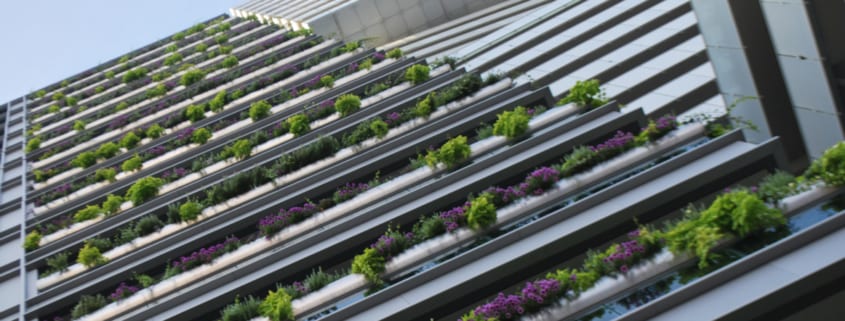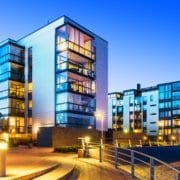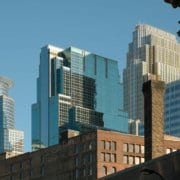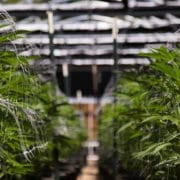The Rise of Environmental Consciousness in Commercial Real Estate Development
Commercial construction, just like many other industries, is becoming much more environmentally conscious as the impact that the developed world has on the environment worsens every year. It has been reported that buildings account for 39% of C02 emissions in the United States. For a little background, buildings have a lifespan of 50-100 years during which they continually consume energy and produce CO2 emissions. If half of all new commercial buildings were built to use 50% less energy, it would save over 6 million metric tons of CO2 annually for the life of the buildings — the equivalent of taking more than 1 million cars off the road every year. For this reason, many developers are doing all they can to make their construction practices greener. Other drivers for green construction include rising public demand for eco-friendly commercial buildings and the emergence of favorable government-provided incentives. Further, green construction has become much more feasible due to the increasing availability and affordability of green building materials, mechanical systems, and furnishings.
Read ahead to learn more about how the increasing demand for eco-friendly housing, new legislation, and innovations in materials and processes are changing the commercial real estate industry.
Give the People What They Want
The rise in demand for green housing is being driven by a more environmentally-aware generation. Millennials have proven to be more aware of their eco-footprint than previous generations. They are opting for public transit and/or a more pedestrian-friendly lifestyle. If they do need to drive and can afford the higher price-point, electric or hybrid cars are often their choice. They also want their housing and workplaces to be green. Whether they are buying residential homes, looking to rent an apartment, or considering commercial space for other reasons, Millennials look to take advantage of the environmental and financial benefits of green properties. Most of the CO2 emissions from buildings in the US come from the combustion of fossil fuels to provide heating, cooling, and lighting and to power appliances and electrical equipment. Incorporating more efficient heating, cooling, lighting, water usage, and waste management can reduce a building’s emissions and save the owner or tenant lots of money over the lifespan of the building. And for owners and developers, sustainable building practices that minimize negative environmental effects appeal to potential tenants and even command higher rents.
The Government is Here to Help
It is hard to deny the long-term value of investing in green building initiatives. It makes sense to reduce reliance on non-renewable resources like fossil fuels, to conserve natural resources, and to lower the utility bill by reducing energy usage. In the short term, however, owners may find it difficult to find or allocate budget to a sometimes more expensive sustainable building project. Before making the assumption that a green initiative may be cost prohibitive, owners should be aware that there are tax credits and incentives on the federal, state, and local levels that are designed to help fund green building initiatives. A few examples of tax incentives to consider include the following:
- Section 179d
- Energy Investment Tax Credit (ITC)
- Modified Accelerated Cost Recovery System (MACRS)
- Residential Energy Efficiency Tax Credits
- PACE Financing
To find out if your project or building’s sustainable construction efforts are eligible for these or other tax credits and incentives, you should seek the guidance of a tax expert with experience in green building tax incentives.
Building the Green Way is Easier and More Affordable than Ever
It has long been understood that green construction is better for the environment and offers lower costs associated with energy, water usage, and waste management. In addition, there are cost benefits from increased worker productivity and safety, safer indoor air quality for tenants and homeowners, better longevity of the building, a smaller environmental footprint, etc. The delay in adoption of these practices was mostly attributed to high upfront costs, but green building materials are no longer cost prohibitive. And when life-cycle costs are considered, green building gives developers even better bang for their buck.
And not only are green materials more environmentally friendly, they are increasingly improving in quality and becoming more competitively priced. According to ConstructConnect.com, the production of concrete and steel accounts for up to 15% of the global greenhouse gas emissions annually. For reasons like this, builders are increasingly looking at more environmentally friendly and renewable alternatives such as
- Mass timber
- Bamboo
- Cork
- Zero-VOC paint
- Soybean-based insulation
- Strawboard made from wheat
- 100% recycled carpeting
The list goes on and on.
Over the past 20 or so years, the green construction movement has gone from an unconventional idea to a mainstream development staple. To put it simply, green construction is better for our environment. It is less draining on the world’s natural resources and helps to provide cleaner and safer building sites for construction workers. The availability and affordability of green building materials is increasing. Green construction and facility maintenance result in reduced energy consumption and water usage and waste reduction. The government is also incentivizing developers and owners to go green. In the end, all this adds up to serious cost savings for those owners and developers. Expect to see environmentally conscious development go to whole new levels in the coming years, with net-zero and net-positive energy building becoming the standard for new construction.
Do you have plans to get started on a green construction project in the future? To learn more about how to leverage technology to raise capital and manage investor relations for a project like that, watch this free on-demand webinar.











